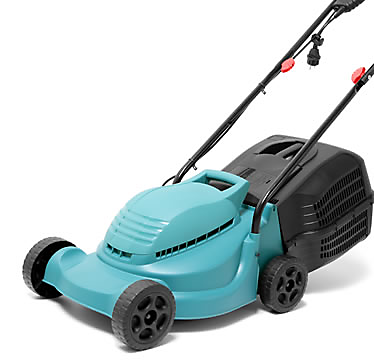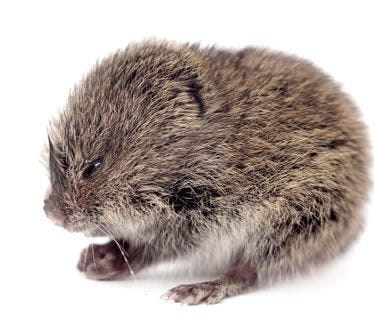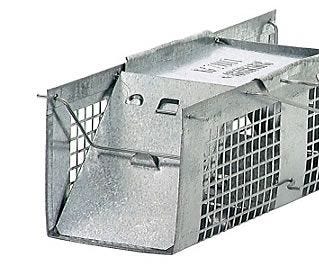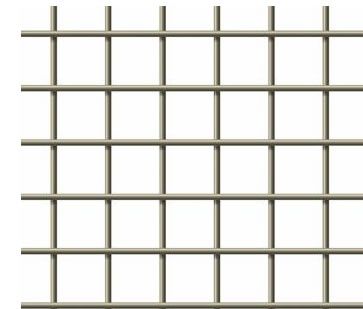





Voles
How to Get Rid of Voles Humanely
Voles are social animals that typically live in colonies, so if you think you have a vole, you probably have many. The best way to completely get rid of vole populations is by employing several control methods at once. Below, Havahart® provides more information about control methods as well as other helpful tips to protect your yard and garden from vole damage.

1 Reduce Food and Cover
Voles are attracted to areas with ample vegetation for food and cover. Rather than encouraging voles to live in your yard, take steps to remove these elements to help drive them out naturally.
- Mow your lawn and pull weeds regularly.
- Remove ground cover like brush, low-lying bushes & shrubs.
- Till soil and mulch to keep them clear of tunnels.
- Clean up any fallen birdseed, berries, nuts, etc.

2 Identify Areas of Damage
It's likely that the voles in your lawn are concentrated to an area about 1/4 acre in size. By identifying the vole damage on your property, you can better pinpoint where the voles are living and where to focus.
Common signs of damage include:
- surface runways: irregular paths of clipped and trampled grass or soil, about 1-2" in width
- burrow entrances: clean, round holes about 1.5" in diameter, often in line with surface runways
- delayed or halted fruit production in trees: indicative of root damage caused by girdling
- girdled bark/stems: irregular gnaw marks about 1/8" wide, 3/8" long and 1/16" deep along the very bottom of trees or plants.
TIP: The amount of vole damage in your yard may also indicate how large your vole population is. Keep this in mind when choosing a control method.
3 Choose Your Right Control Method
Once you've located your voles and know the scale of your problem, use the information below to choose a control method. Chances are you have more than one vole to get rid of, and the more control methods you employ at one time, the better your chances are at getting rid of all of them.
Live Vole Trap

Use live vole traps to capture voles and manually remove them from your property. This method is ideal for smaller vole populations. The following tips will help you achieve best results:
- Set out multiple traps to capture as many voles as possible.
- Position your traps directly on top of the surface runways you've identified in your lawn or soil to catch them as they travel back and forth.
- Monitor your traps frequently so you can release the voles in a timely manner.
For more information, read How to Trap Voles »
Shop Traps »Vole Repellents

Use a castor oil-based repellent to drive voles out of your yard by making your lawn or soil unfit for voles to live and eat in. Castor oil is an all-natural oil that repels voles by affecting their senses in two ways:
- coats the vegetation voles typically eat, giving it an unpleasant taste
- creates a disagreeable odor on the grass and inside burrows
This method is great for areas of low or high vole density. Apply thoroughly and as directed for the best results.
For more information, read How to Repel Voles »
Shop Repellents »Exclusion

Install physical barriers to keep voles out of your yard or certain areas. Exclusion is only effective if the proper materials and specifications are used in the construction of your barrier. Two exclusion options are recommended:
- Fencing: Install 1/4" or smaller mesh fencing around gardens to protect the entire area.
- Tree Guards: Protect trees from girdling and roots from being destroyed by wrapping the base of trees with 1/4" mesh, sheet metal or plastic cylinders.
Vole barriers should extend at least 12" above the ground (or snow depth) and buried at least 3" into the ground to avoid burrowing underneath.
Expert Tips
- Before trapping voles, understand your local laws regarding trapping and relocating wildlife.
- Application is key when using a repellent. Follow your repellent's instructions to ensure full effectiveness. For more repelling tips, read How to Repel Voles »
- When installing a tree guard, ensure that there is enough room around the tree to grow. Prevent birds from nesting in between the barrier and the tree by covering the tops of the cylinders as well.
- After getting rid of voles, destroy their burrows and surface runways to discourage other voles from establishing a home base in your yard.
- Vole population densities are typically cyclical; the number of voles in a particular area rises and falls over the course of several years. It's important to recognize and remedy a vole infestation as soon as signs of damage appear.
